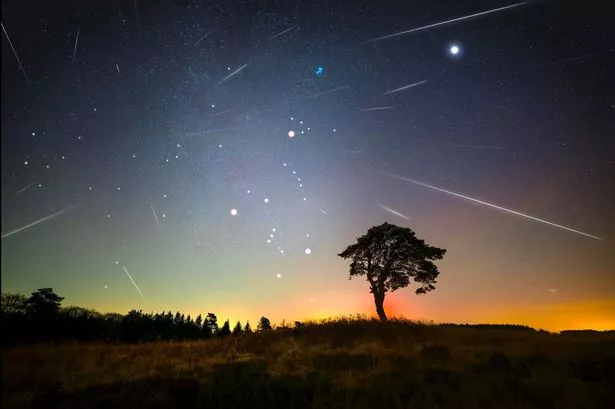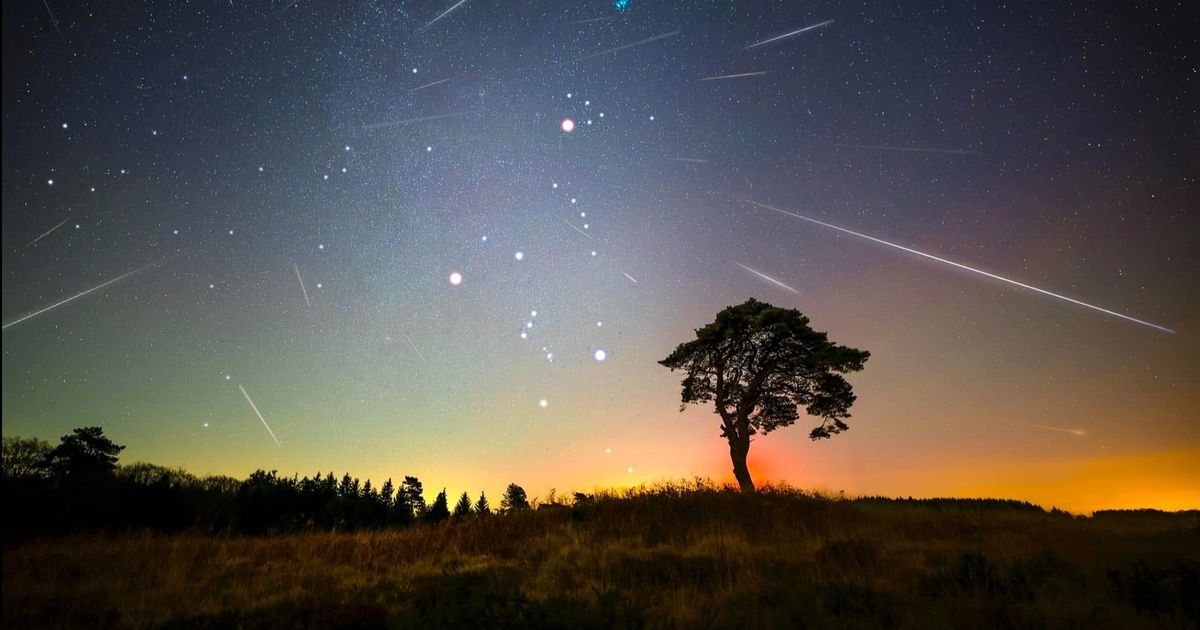Most showers can be easily visible with the naked eye without the need for any specialist equipment The Lyrid meteor shower will take place from April 16 until April 22(Image: Josh Dury/PA)
The Lyrid meteor shower will take place from April 16 until April 22(Image: Josh Dury/PA)
April is nearly upon us and the new month brings with it plenty of celestial events to gaze at. Stargazers can enjoy everything from the Lyrid meteor shower to bright inner planets, and more.
It has been an incredible start to 2025 for sky-watchers as aurora displays have lit up skies across the UK and ‘planet parades’ have offered uncommon sights of the celestial objects around us. Other events have included a partial lunar eclipse, followed by a partial solar eclipse.
Perhaps one of the most exciting events that takes place across the year will be in April. The Lyrid meteor shower will take place from April 16 until April 22. According to the Royal Museums Greenwich, the shower will peak on April 22.
Meteor showers are a permanent fixture on astronomers’ calendars because of their reliability. Most showers can be easily visible with the naked eye without the need for any specialist equipment. They are usually named after a star or constellation that is close to where the meteors appear in the sky.
Scientists estimate that about 48.5 tons (44 tonnes or 44,000 kilograms) of meteoritic material falls on Earth each day. Almost all the material is vaporized in Earth’s atmosphere, leaving a bright trail fondly called “shooting stars.” Several meteors per hour can usually be seen on any given night. When the number increases dramatically, these events are called meteor showers.
Every meteor shower has a progenitor Comet – the place where the debris cloud has come from. An example is Halley’s Comet which orbits the Sun every 76 years and is the ‘progenitor’ of the Orionids. When meteoroids enter Earth’s atmosphere (or that of another planet, like Mars) at high speed and burn up, the fireballs or “shooting stars” are called meteors.
The Lyrid meteor shower will be “Bright fast meteors, some with trains. Associated with Comet Thatcher.” It is one of the oldest known meteor showers. NASA says: “The Lyrids have been observed for 2,700 years. The first recorded sighting of a Lyrid meteor shower goes back to 687 BC by the Chinese.”
The Lyrids are known for their fast and bright meteors. Though not as fast or as plentiful as the famous Perseids in August, Lyrids can surprise watchers with as many as 100 meteors seen per hour. The Lyrids are best viewed in the Northern Hemisphere during the dark hours (after moonset and before dawn).
The best way to watch the meteor shower is by finding an area well away from city lights or street lights. Being prepared with a sleeping bag or blanket. After about 30 minutes in the dark, your eyes will adapt and you will begin to see meteors. Although the space agency warns: “Be patient – the show will last until dawn, so you have plenty of time to catch a glimpse.”
Lyrids Meteor Shower
Comet of origin: C/1861 G1 Thatcher
Radiant: Constellation Lyra
Active: April 17 to April 26, 2025 (Peak night: April 21-22)
Peak activity meteor count: About 18 meteors per hour
Meteor velocity: 29 miles per second
